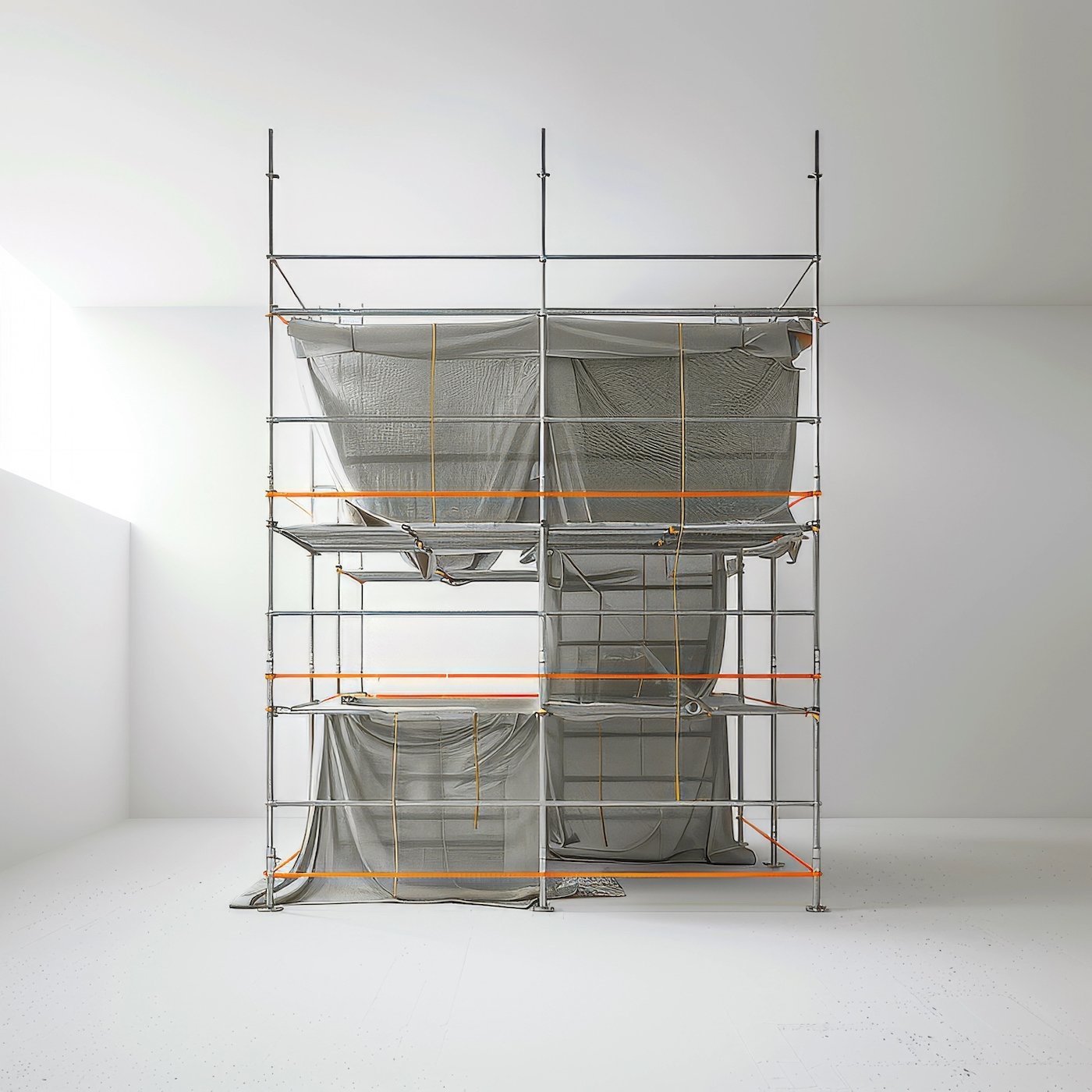Open to View: Ian Woo 1998
Reflecting on a moment in the artist’s thinking
By Sherman Mern Tat Sam
Introducing our ‘Excerpts’ series! Over the years, we have republished parts of long-form writing, from catalogue essays to book chapters. This practice will now be formalised in a monthly column. We will continue to be on the lookout for content to share. If you may like to send us texts to consider, please email info@artandmarket.net.
Ian Woo, ‘Finger food’, 1998, acrylic on canvas, 76.5 x 101.7 x 3.2cm. Image courtesy of the artist and FOST Gallery.
“Philosophy just puts everything before us, and neither explains nor deduces anything. – Since everything lies open to view there is nothing to explain.”1
Wittgenstein (PI 126)
I
When I visited Ian Woo last year he showed me some recently rediscovered old paintings. This exhibition is a result of that piece of serendipity. Although the selected works cover a five-year period, 1997–2001, it is ‘Finger food’, completed in 1998, that triggered this conversation. Woo refers to the group of works around ‘Finger food’ as “tabletop paintings”. It’s a phrase that playfully describes the view of his forms, which is looking down as if gazing upon a table, but also plays with a Singaporean’s main cultural preoccupations: food and eating. The flat, planar fields of colour in ‘Finger food’, like the others from this time, provide the ground for more painterly touches to evoke form. Across these green-grey-cream paintings there is a sense that forms, articulated by gestures, are in a state of becoming. Does that shape at the top right of ‘Finger food’, with its greyish vertical band and conical end, suggest a piece of sushi? Or even a fish head? Could there be a Guston-like grey toothbrush balancing on a bar of white soap in the lower left corner of ‘Knees and toes’ (1998)? Yet despite these multitudinous shapes and touches, collectively these paintings exude a calm ease.
Ian Woo, ‘1998’, 2023, exhibition view at FOST Gallery, Singapore. Photography by Wong Jing Wei. Image courtesy of the artist and FOST Gallery.
Ian Woo, ‘1998’, 2023, exhibition view at FOST Gallery, Singapore. Photography by Wong Jing Wei. Image courtesy of the artist and FOST Gallery.
Ian Woo, ‘Painting and the art of moving air 2’, 2000, acrylic on linen, 116 x 87 x 5cm. Image courtesy of the artist and FOST Gallery.
II
Instead of ‘1998’, another title for this show might have been the moods (or passions) of Ian Woo. The exhibition is loosely grouped in two parts: cooler, interiorised pieces like ‘Finger food’ and more gestural or dynamic works like ‘Painting and the art of moving air 2’ (2000). This dichotomy foreshadows the differential that Woo utilizes in the future: hot and cool, dynamic and calm, intellectual and material. Collectively both these groups fall into the period between his MA in Barcelona (1995) and his Australian doctorate (2006). His Barcelona paintings play with wispy, whispery gestures on flattish, moody grounds. We can perhaps attribute that to his interest at the time in Chinese ink painting and Western monochromes, in particular those of Gerhard Richter; that is, drawing on different visual languages.
This is an excerpt of Sherman Mern Tat Sam’s essay, published on the occasion of Ian Woo’s solo exhibition ‘1998’. The show is on view from 20 May to 22 July 2022 at FOST Gallery, Singapore.
To read other writings from the Excerpts series, click here.
1 Ludwig Wittgenstein, Philosophical Investigations, 126, p.50. (London, 1986).
2 Ian Woo, “Ian Woo and Painting”, in Mental Images: Paintings and Drawings, interview with Binghui Huangfu, p.24. (Singapore, 2000).
3 Edmund Husserl, Analyses concerning Passive and Active Synthesis: Lectures of Transcendental Logic, p.107. (The Netherlands, 2001).
4 Ian Woo, “Ian Woo and Painting”, in Mental Images: Paintings and Drawings, interview with Binghui Huangfu, p.27. (Singapore, 2000).
About the Writer
Sherman Mern Tat Sam is an artist and critic based in London and Singapore. He has exhibited internationally, including one-person shows at The Suburban (Chicago), the Rubicon Gallery (Dublin), Equator Art Projects (Singapore), Annka Kultys Gallery (London), and CeyssonBenetiere (Luxenbourg). His work has also been included in numerous group exhibitions, including M6: Around London at CCA Andratx (Majorca), Connected at Feature Inc (New York), The Theory and Practice of Small Paintings at Equator Art Projects (Singapore), Slow Painting, a UK touring museum exhibition, and Strange Forms of Life, STPI, Singapore. He will next show at Kingsgate Project Space (2023) and Mamoth Contemporary (2024) in London. As a writer, he has contributed to kultureflash.net, The Brooklyn Rail and various British magazines, as well as ocula.com, artcritical.com and Artforum.

















